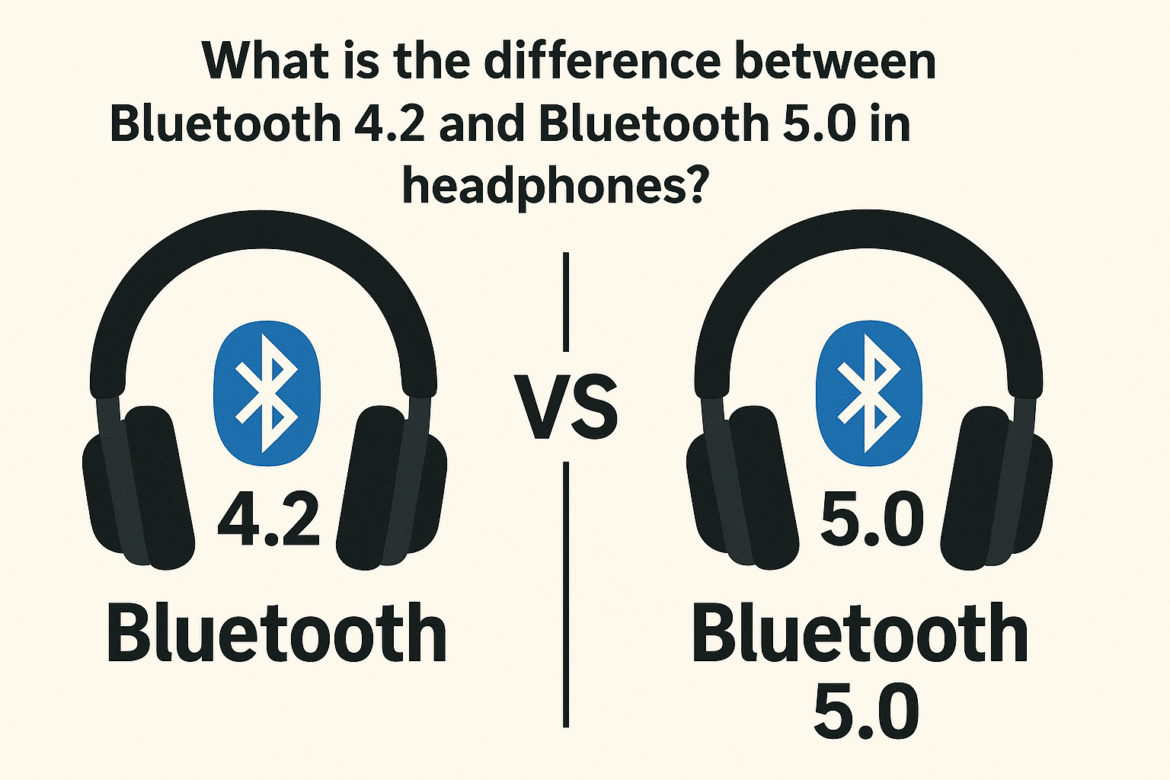What is the Difference Between Bluetooth 4.2 and Bluetooth 5.0 in Headphones?
In the ever-evolving realm of audio technology, the intricacies of Bluetooth versions in headphones often go unnoticed, like subtle notes in a grand symphony. Yet, understanding the difference between Bluetooth 4.2 and Bluetooth 5.0 can transform one’s listening experience from merely enjoyable to truly extraordinary. Let us embark on this journey to unravel the distinct nuances between these two Bluetooth versions, exploring their features, capabilities, and the impact they have on the world of wireless audio.
Understanding Bluetooth Technology
Bluetooth technology, a ubiquitous presence in modern wireless devices, serves as the silent conductor orchestrating seamless connections. It is the invisible tether that links our headphones to our devices, enabling us to revel in music, podcasts, and calls without the constraints of wires. As we delve deeper into the differences between Bluetooth 4.2 and Bluetooth 5.0, it is crucial to appreciate the role Bluetooth plays in our auditory adventures.
Bluetooth 4.2: The Reliable Foundation
Bluetooth 4.2, introduced in December 2014, laid the groundwork for wireless audio connectivity, offering a stable and reliable connection. With this version, users enjoyed improved data transfer speeds, enhanced privacy features, and a more efficient power consumption compared to its predecessors. Bluetooth 4.2 became the standard for many wireless headphones, delivering a satisfactory listening experience to countless users.
Key Features of Bluetooth 4.2:
- Data Transfer Speed: Bluetooth 4.2 offers a modest improvement in data transfer speed over previous versions, allowing for smoother streaming of audio content.
- Privacy and Security Enhancements: This version introduced features such as LE Privacy 1.2, providing enhanced privacy and reducing the risk of tracking.
- Improved Power Efficiency: Bluetooth 4.2 is more energy-efficient, extending battery life in headphones and enabling longer listening sessions.
- Internet Protocol Support Profile (IPv6): The inclusion of IPv6 support broadened the capabilities of Bluetooth 4.2, allowing devices to communicate over the internet.
Bluetooth 5.0: A Symphony of Advancements
Bluetooth 5.0, unveiled in December 2016, brought a crescendo of advancements to the world of wireless audio. Its introduction marked a significant leap forward, transforming the listening experience with its enhanced capabilities. This version has become a staple in modern headphones, enticing audiophiles and casual listeners alike.
Key Features of Bluetooth 5.0:
- Increased Range: Bluetooth 5.0 extends the range of connectivity up to four times that of Bluetooth 4.2, allowing users to wander further from their devices without experiencing disconnections.
- Higher Data Transfer Speed: With double the data transfer speed compared to Bluetooth 4.2, Bluetooth 5.0 ensures a more seamless streaming experience, reducing latency and improving audio quality.
- Improved Broadcast Messaging Capacity: Bluetooth 5.0 enhances the capacity for broadcast messaging, enabling more efficient communication between devices.
- Dual Audio Feature: This version allows for simultaneous audio streaming to two devices, letting users share their audio experience effortlessly.
Comparing Bluetooth 4.2 and Bluetooth 5.0 in Headphones
To truly grasp the differences between Bluetooth 4.2 and Bluetooth 5.0, we must examine their impact on headphones. The following table highlights key aspects where these versions diverge:
| Feature | Bluetooth 4.2 | Bluetooth 5.0 |
|---|---|---|
| Range | Up to 10 meters | Up to 40 meters |
| Data Transfer Speed | 1 Mbps | 2 Mbps |
| Energy Efficiency | Moderate | Enhanced |
| Audio Quality | Standard | Improved with less latency |
| Simultaneous Connections | Limited | Dual audio capability |
Enhanced Audio Experience with Bluetooth 5.0
Bluetooth 5.0’s enhancements resonate deeply in the realm of audio quality. With higher data transfer speeds and reduced latency, listeners can indulge in richer, more immersive soundscapes. The ability to maintain a stable connection over greater distances ensures that the music flows uninterrupted, even as one moves freely about their surroundings.
The dual audio feature adds a harmonious layer to the listening experience, allowing two pairs of headphones to connect to a single device. This innovation transforms solitary listening into a shared symphony, fostering connections through music.
Practical Implications for Headphone Users
For those who prioritize range and connection stability, Bluetooth 5.0 is a clear victor. It caters to users who relish the freedom to move without losing the connection to their device. The increased data transfer speed not only enhances audio quality but also supports high-resolution audio formats, providing a more nuanced listening experience.
However, it’s important to note that the benefits of Bluetooth 5.0 are contingent upon both the headphones and the source device supporting this version. Users with older devices may not fully realize the advantages of Bluetooth 5.0, making it essential to consider compatibility when upgrading.
Conclusion: Choosing the Right Bluetooth Version
In the grand symphony of audio technology, the choice between Bluetooth 4.2 and Bluetooth 5.0 in headphones hinges on individual preferences and priorities. Bluetooth 4.2 provides a reliable foundation, suitable for those content with standard features and moderate range. Meanwhile, Bluetooth 5.0 offers a crescendo of advancements, elevating the listening experience with its extended range, faster data transfer, and enhanced audio quality.
As we conclude this exploration, let us remember that the true essence of music lies not only in the technology that delivers it but in the emotions it evokes and the connections it fosters. Whether one opts for the steadfast reliability of Bluetooth 4.2 or the harmonious advancements of Bluetooth 5.0, the journey through sound is an artful odyssey, woven with the threads of innovation and imagination.
Last Updated on August 26, 2025
